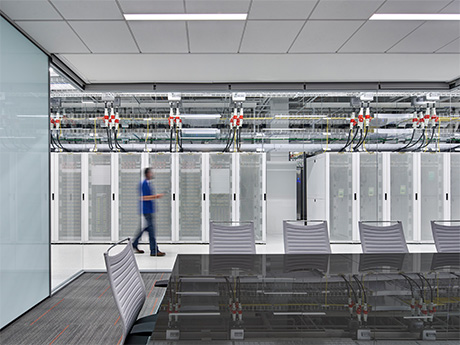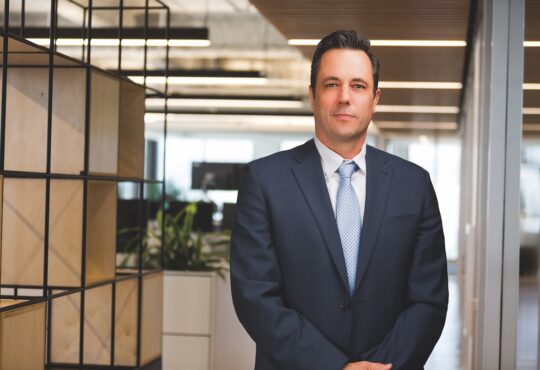What Developers Should Know About Repositioning Commercial Properties into AI-Ready Data Centers

By Felicia Santiago, historic preservation architect, Gensler
As artificial intelligence (AI) technologies evolve and scale, digital infrastructure must follow suit. While advocating for historic buildings to find new life via preservation as data centers is understandable, not every structure is well-suited for this type of repurposing.
But this shouldn’t stop developers from overlooking two big opportunities for data center construction plays: revitalizing existing vacant properties as data centers and re-tooling legacy data centers for today’s AI needs.
The beauty of adaptive reuse is that it theoretically preserves the existing fabric of community while incorporating modern infrastructure where it is needed — within the fabric of the community.

Another opportunity to repurpose existing facilities into modern data centers involves potentially bypassing regulatory items that cause challenges and delays, such as rezoning, since these data centers would be grandfathered into that use.
Legacy data centers — once the backbone of enterprise computing — are increasingly outdated and unable to support the energy intensity, cooling demands and density required by AI infrastructure. Rather than defaulting to new construction, there’s an urgent opportunity to recycle existing buildings. The sustainability practices of repurposed buildings should not be overlooked as the need for data centers continues to grow.
The recent wave of data centers is about scale. Hyperscale campuses, suburban greenfields and purpose-built facilities dominate the conversation. But the rise of AI has shifted the equation. AI servers consume far more energy, generate more heat and require faster response times than traditional enterprise facilities. These demands challenge not only how we design new facilities, but also how we rethink the buildings we already have.
Cities today are filled with vacant or underutilized office towers, warehouses, retail storefronts and empty parking lots. Rather than waiting for demolition or redevelopment into more of the same, these structures represent a timely opportunity: adaptive reuse for AI-ready data centers.
What’s the Difference?
So how does AI change the data center conversation? AI workloads can be up to 10 times more power-dense than traditional information technology (IT). The increase in rack density translates into higher floor loads to manage the added rack weight.
It also means advanced cooling systems to lower the heat output generated by the AI racks. Lastly, resilient power delivery is a necessity and why proximity matters — shorter data paths reduce latency and energy loss.
All these requirements indicate urban infill sites as attractive construction options for these facilities. In other words, the data centers that will fuel AI should be closer to users, and that means looking inward, not outward.
Key Considerations
- Noise: Data center facilities make noise, and noise pollution is a valid concern for suburban areas and city centers. The external sound comes from outdoor backup generators and cooling units. Rooftop acoustic screens made of mineral wool or fiberglass work well at absorbing and dissipating sound. While the noise won’t be eliminated, thoughtful placement of rooftop acoustic screens can provide a more comfortable living solution.
- The Power Grid: Data centers pull more power than most building types. Onsite renewables such as solar panels, battery storage and creative generator placement can help offset grid demand. Siting backup generators in creative locations, like below-grade vaults, in dense areas can be a decent solution for a land locked structure.
- Weight: A single server AI rack (fully populated) can weigh close to 4,000 pounds, compared to its lighter predecessor that weighed in at 1,000 to 2,500 pounds. A robust data center floor is needed for any AI-ready facility, making some older factories and warehouses prime candidates. These buildings can work because they were designed to hold live loads and dead loads of 250-plus pounds per square foot due to manufacturing equipment and storage requirements.
These buildings may require minimal reinforcement. On the other hand, older office buildings typically have a minimum floor load capacity of 50 pounds per square foot. Preliminary analysis of these structures is necessary to understand when a structural retrofit is needed (i.e. — steel beam reinforcements, additional load-bearing supports) before hosting AI-ready infrastructure.
Overlooked Repositioning Opportunities
- Retail big boxes: Large footprints, single level, clear access to utilities and suburban locations near end-users make them ideal for edge or AI “pods.” Adjacent parking that once served a retail store can also offer an opportunity to house generators in below-ground vaults or above ground with acoustic screens and native landscape.
- Former legacy data centers: Often hidden within existing structural retrofits, strengthening slabs isn’t a far stretch. These legacy sites can be conveniently found near city centers or in areas already known as tech hub spots. Utility upgrades and noise solutions can be designed into a renovation.
Looking Ahead
Repositioning existing buildings can potentially deliver faster speed to market than ground-up construction while also avoiding the embodied carbon costs of demolition and new builds. Cities benefit by reducing vacancy; developers receive help from incentives tied to reuse, and communities gain infrastructure that directly supports the digital economy.
The real future lies every day in urban buildings: the empty office tower, the forgotten warehouse, the darkened department store, the unused plot of land. These properties are waiting to be reimagined as the AI infrastructure our digital future depends on. Adaptive reuse isn’t just a design strategy; it’s a sustainability and innovation strategy that allows us to meet AI demand while strengthening the cities we live in.





